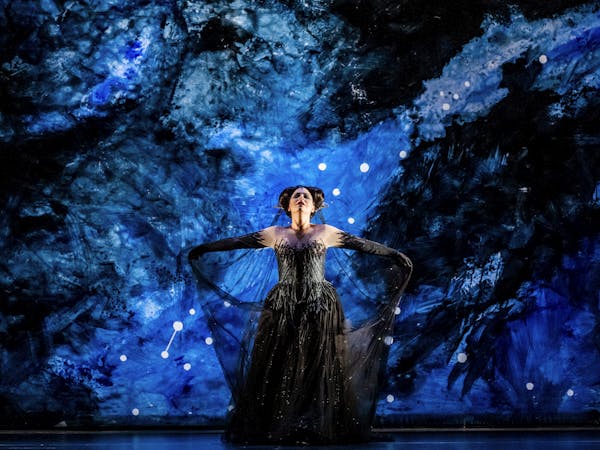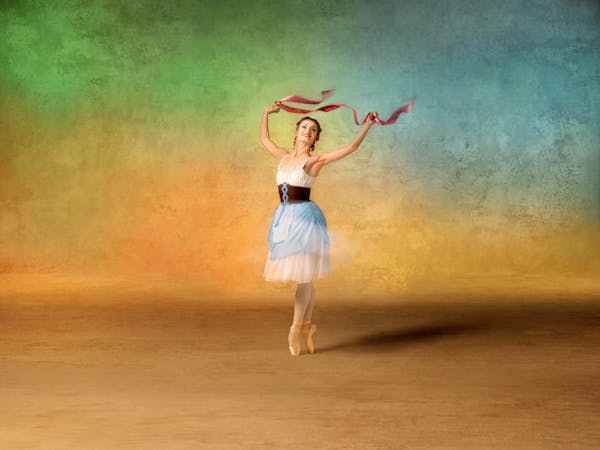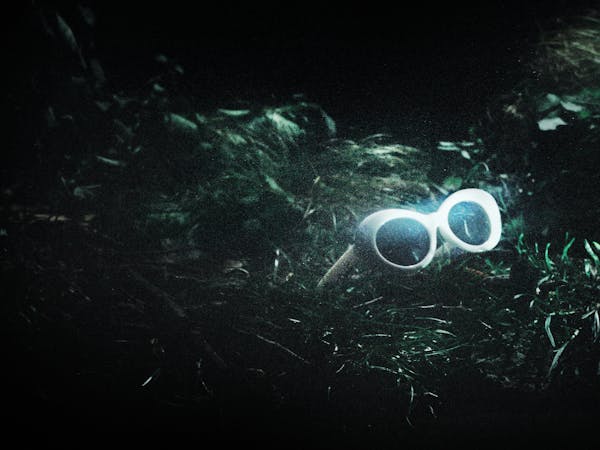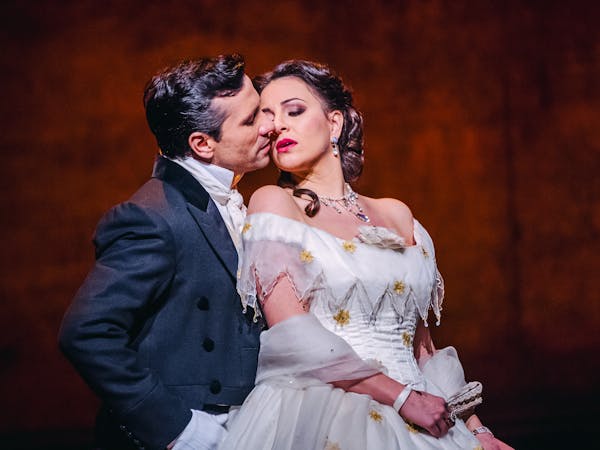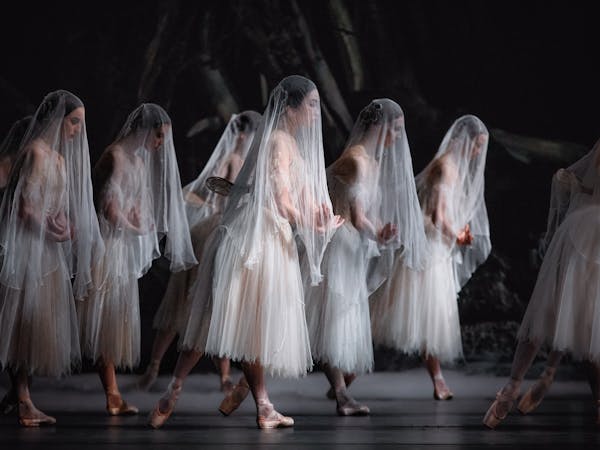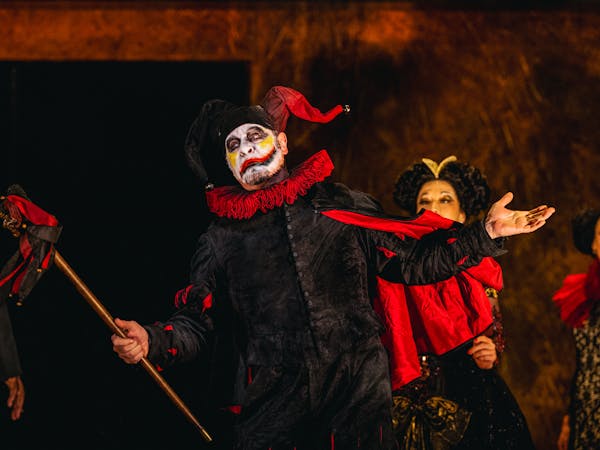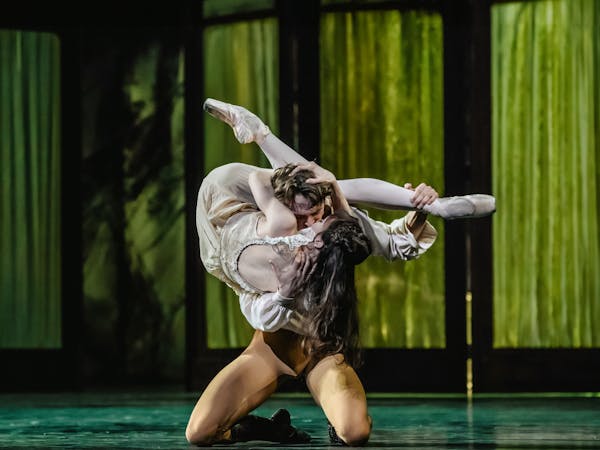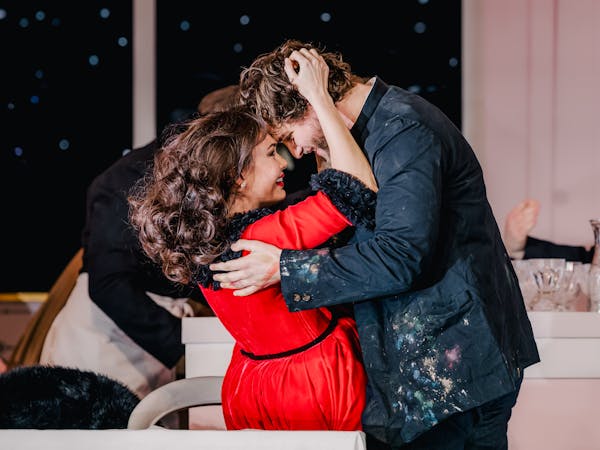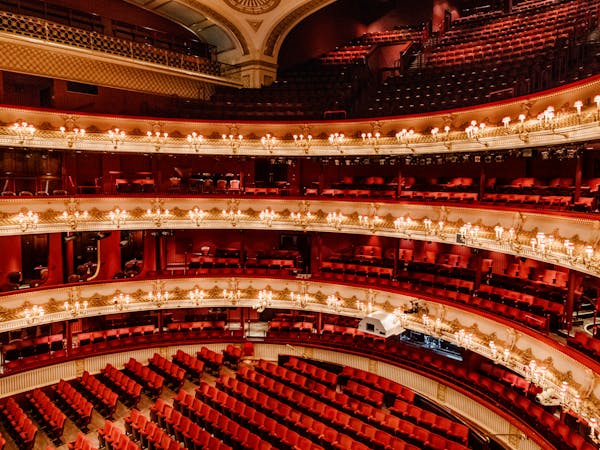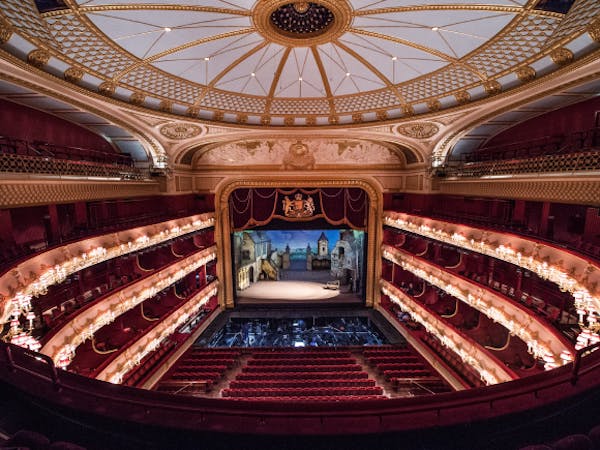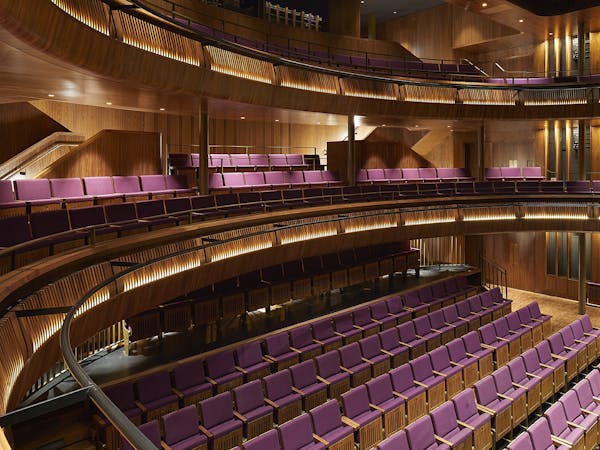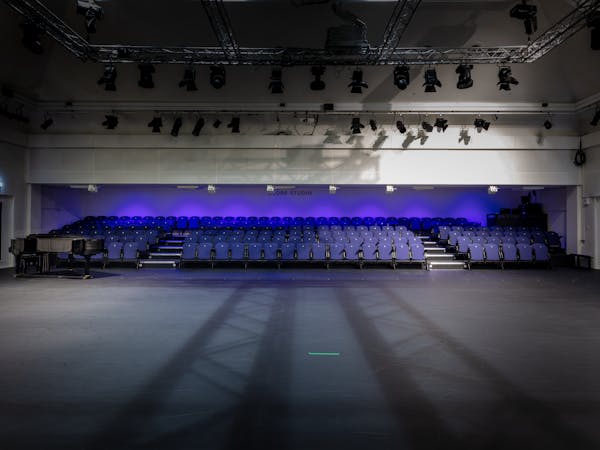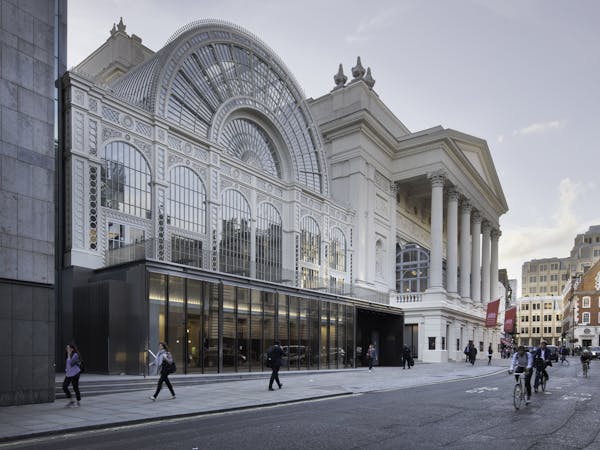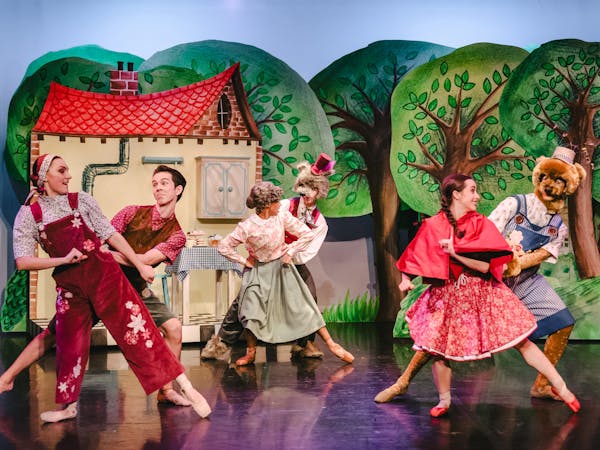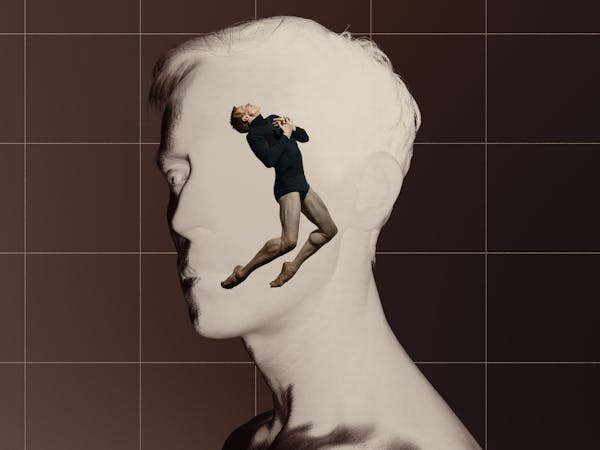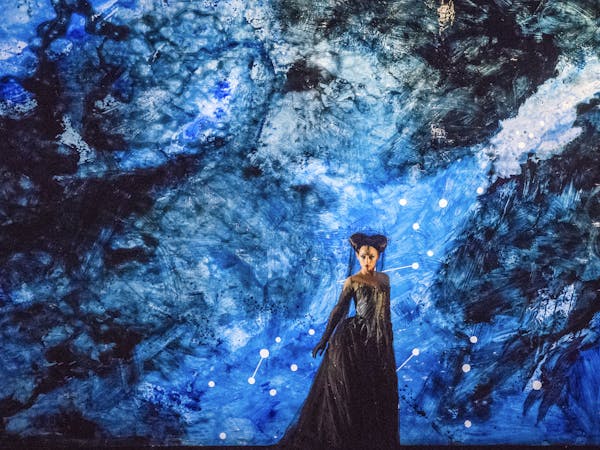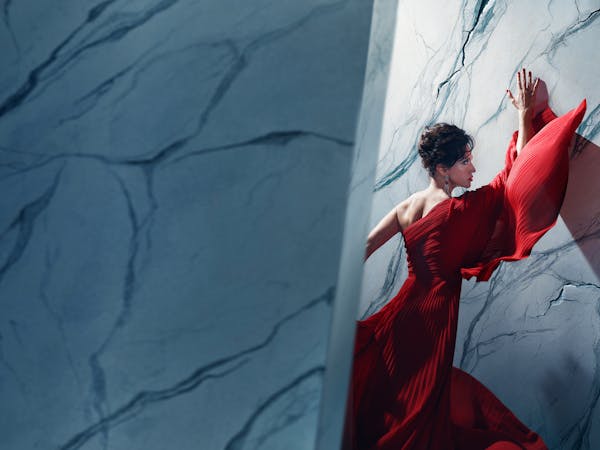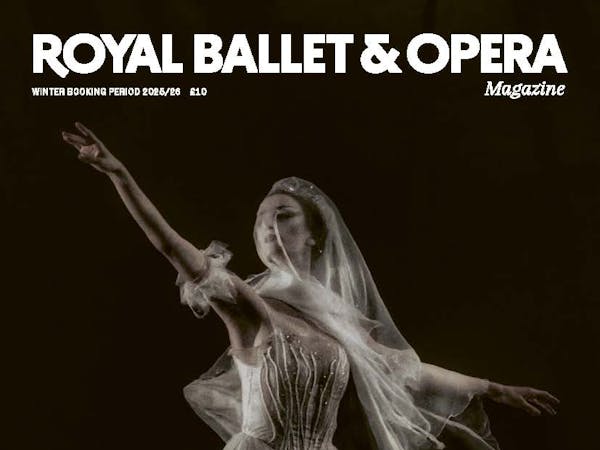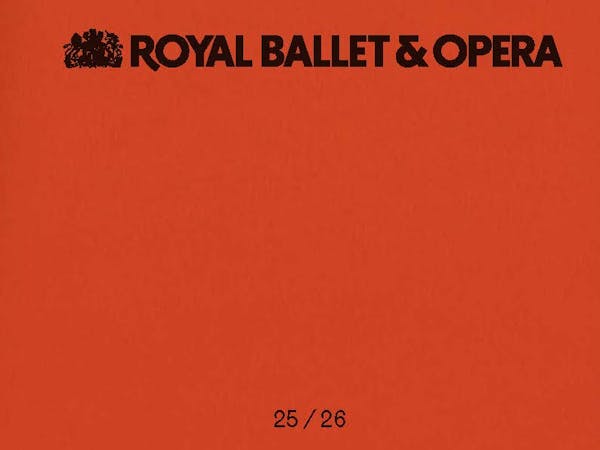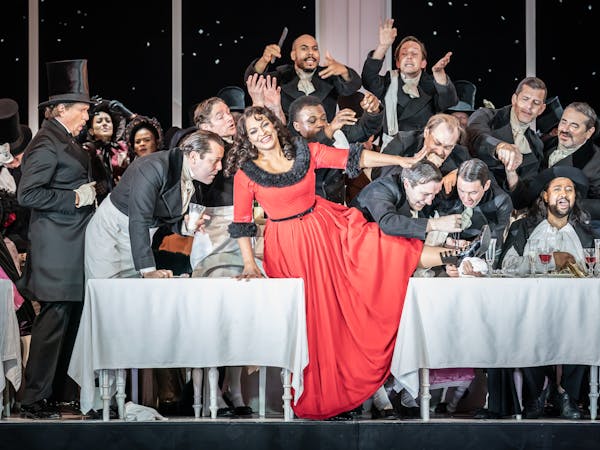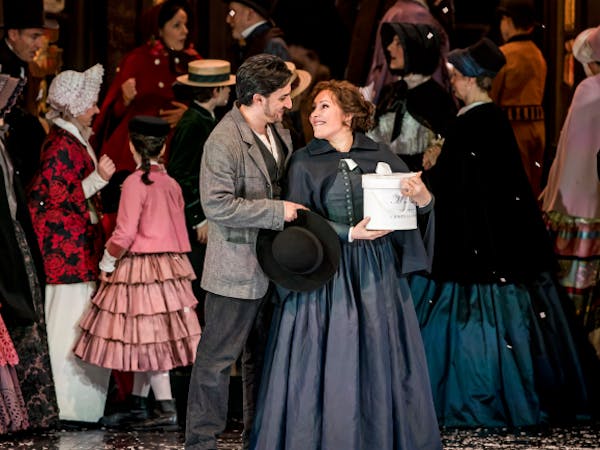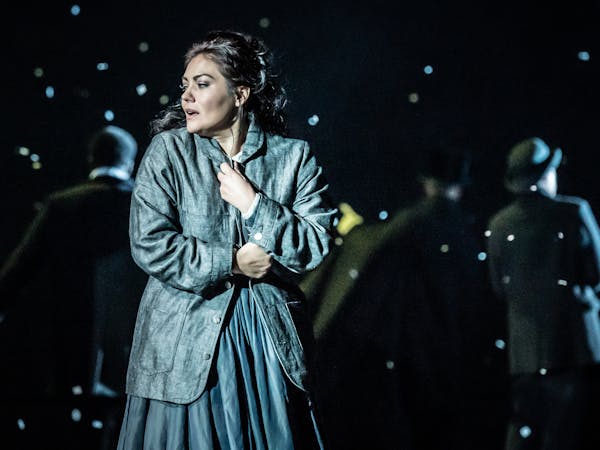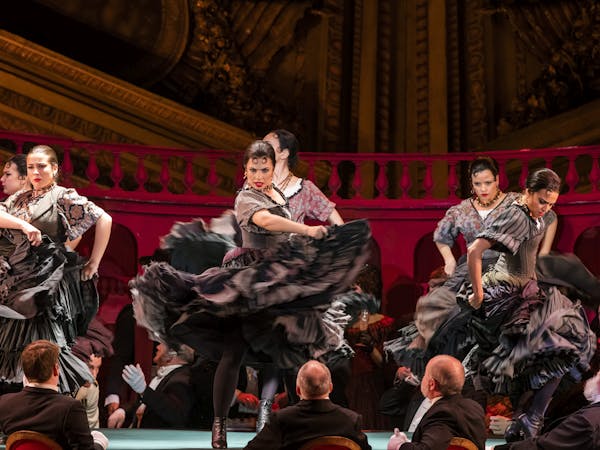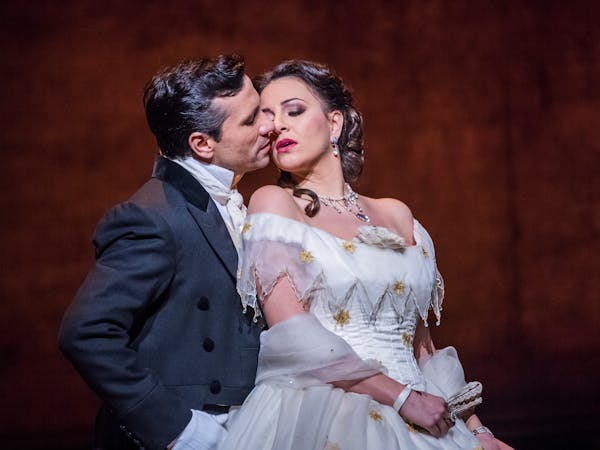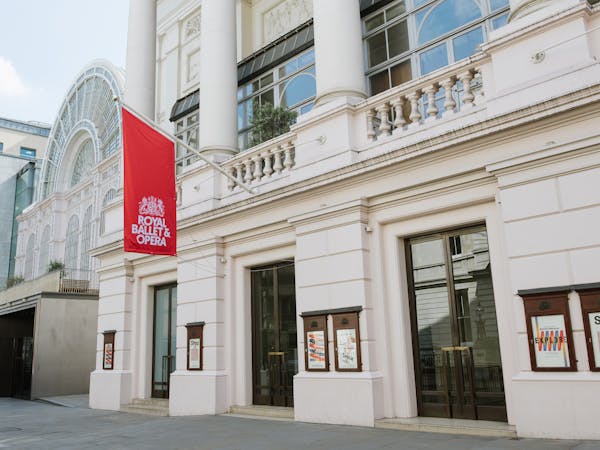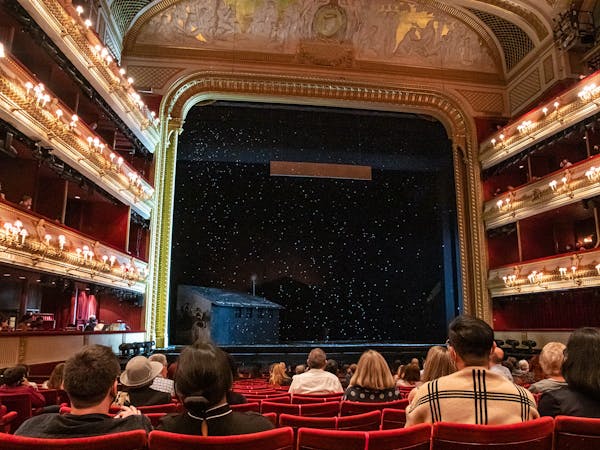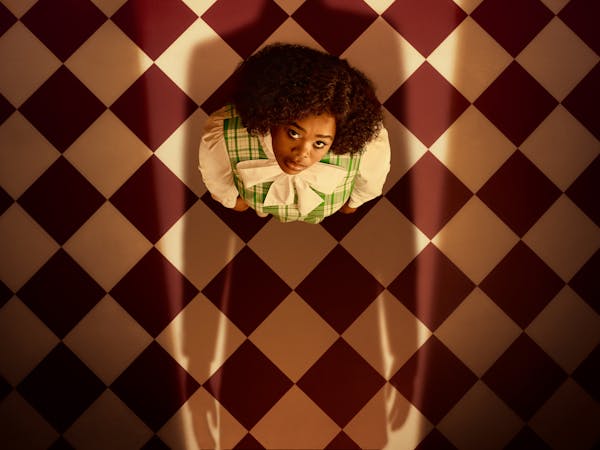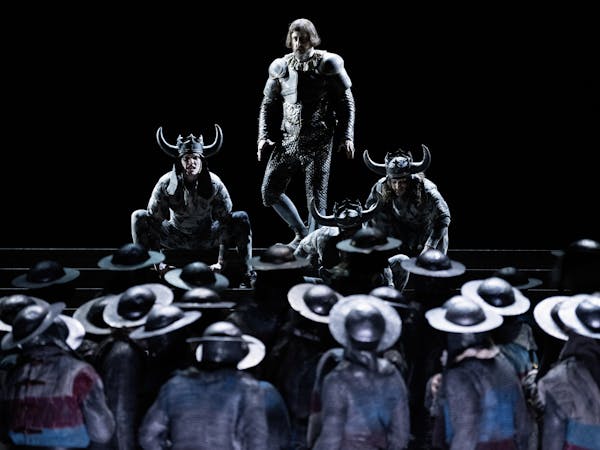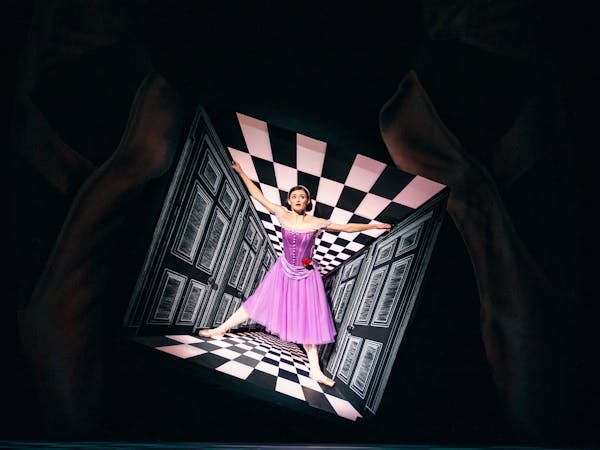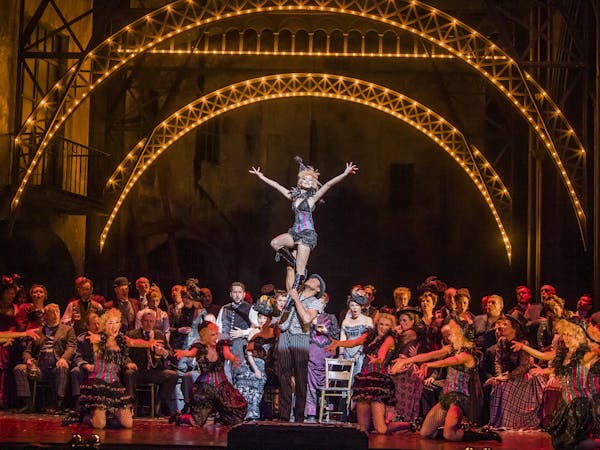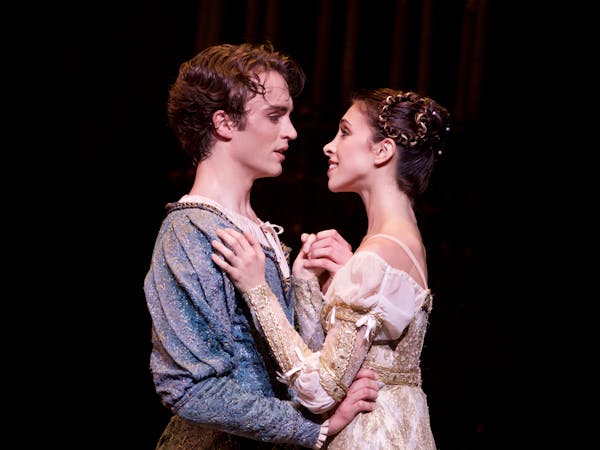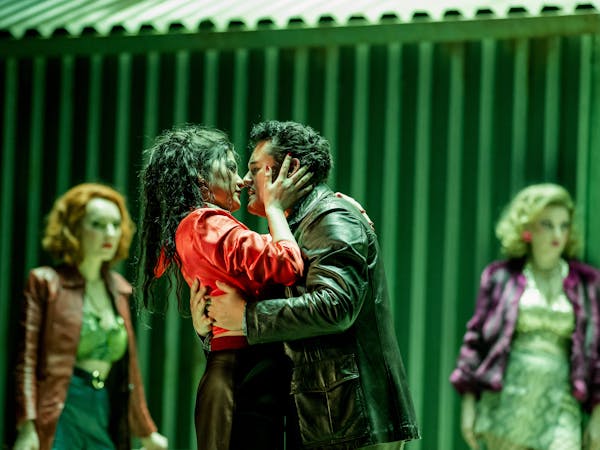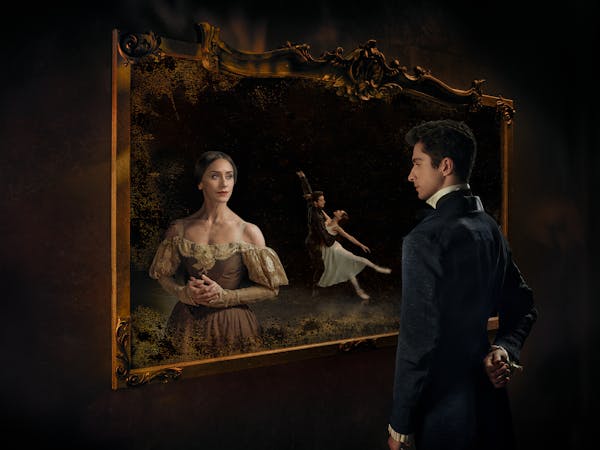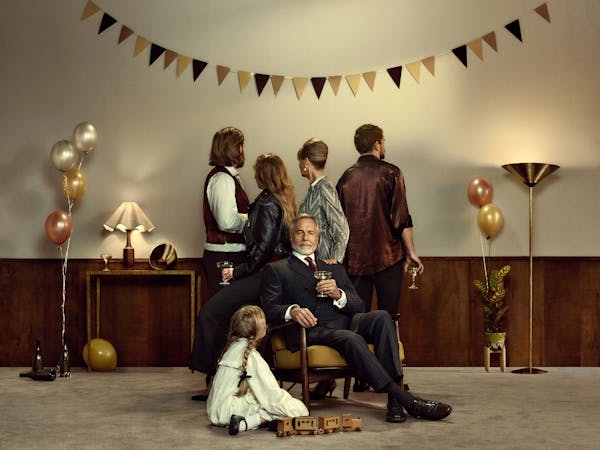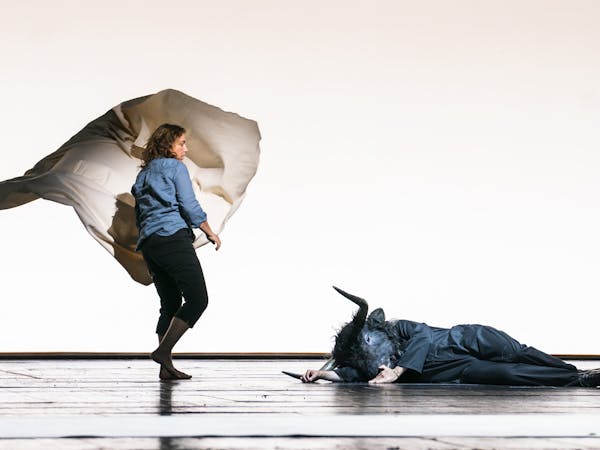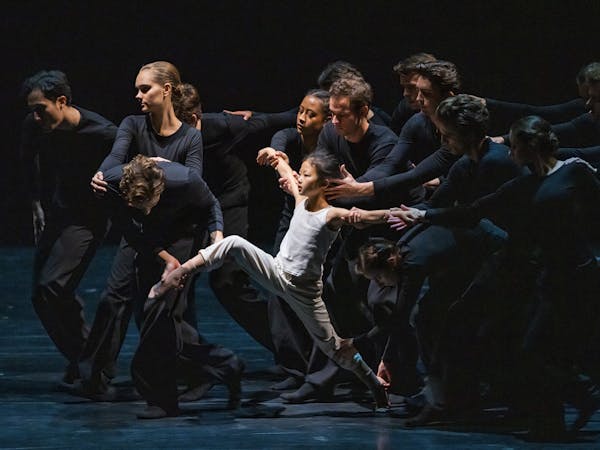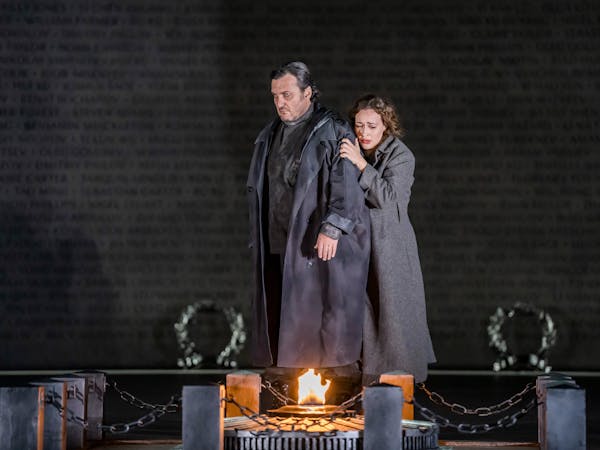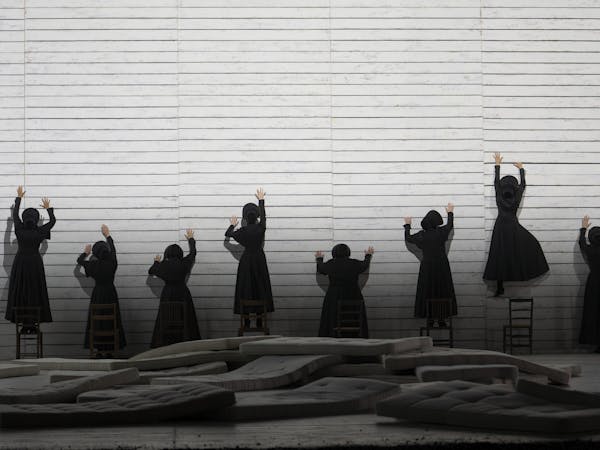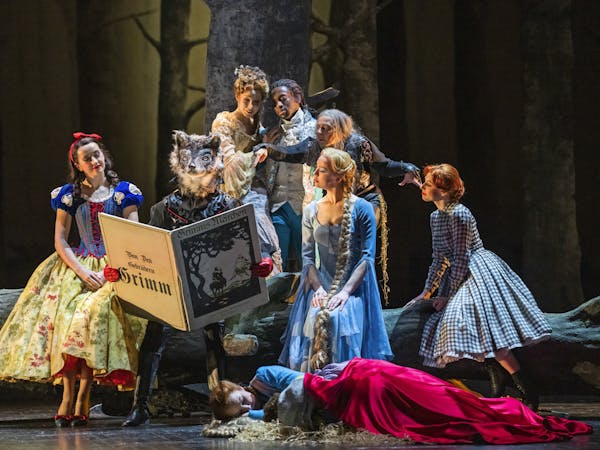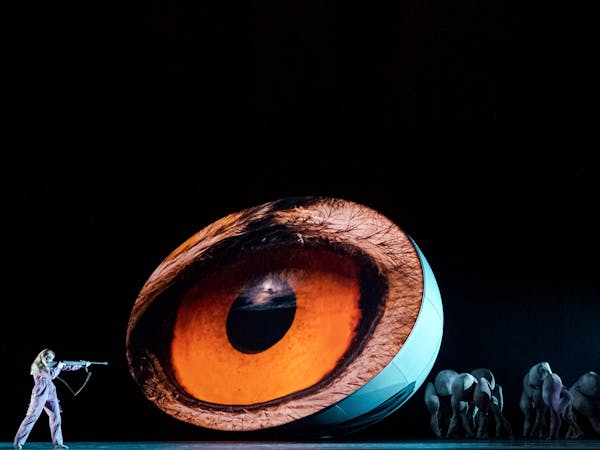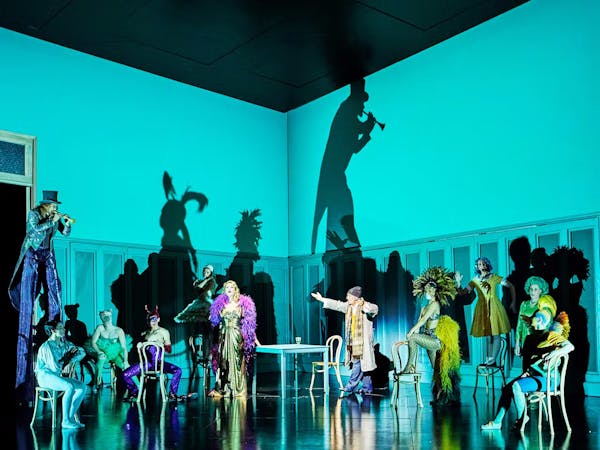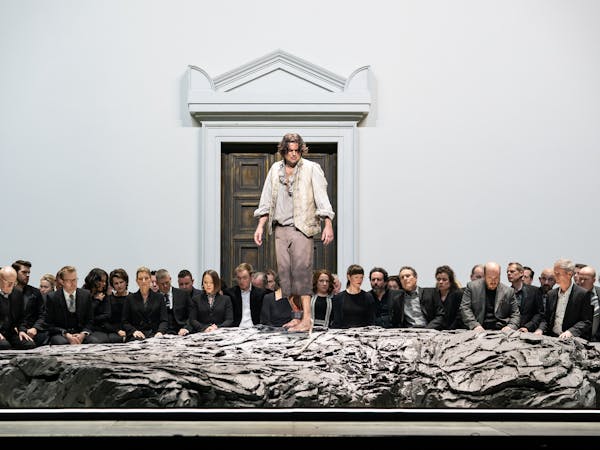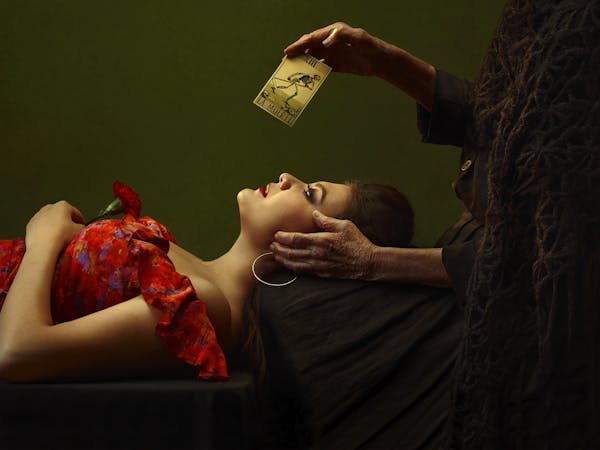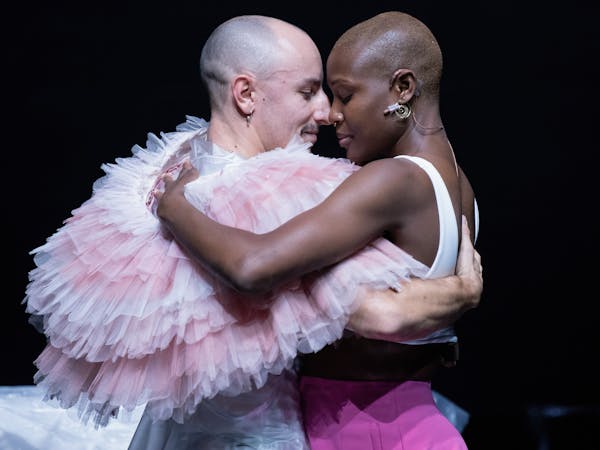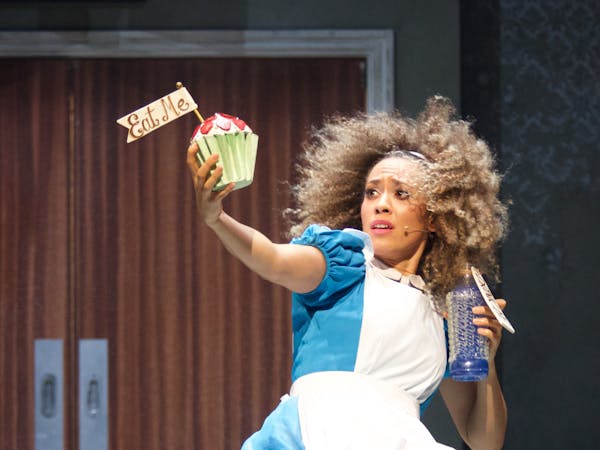Accessibility
The Royal Ballet and Opera is for everyone. We want everyone to have the best experience with the Royal Ballet and Opera - whether they are attending a performance or event, using our building or watching on Royal Ballet and Opera Stream.
Upcoming accessible performances
Access Becomes Art: World Ballet Day 2025
Wednesday 12 November 2025 marks the return of World Ballet Day, a global celebration of dance. Building on over a decade of innovation, this year’s theme focuses on radical accessibility – inviting artists and audiences to experience ballet in transformative new ways.
The Royal Ballet livestream will be available from Wednesday 12 November 2025.
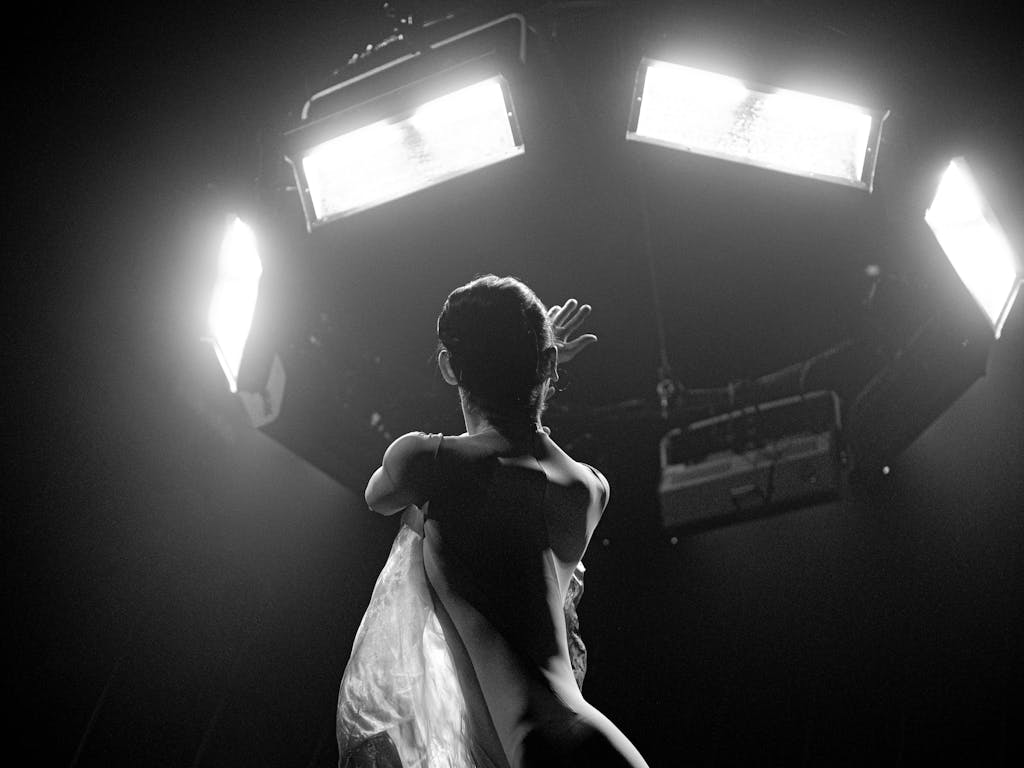
Access Scheme
Join our Access Scheme to customise your account with your own access requirements. You can also get priority booking for accessible performances and events.
You can tailor the booking process to include:
- Accessible event information
- Companion tickets
- Audio Season Guides
- Assistive hearing devices
- Accessible seating
- Access discounts and more
Simply register for an account and after you have signed in, go to the 'Accessibility' tab in your Royal Ballet and Opera website account and complete the Access Scheme registration process. Here you can add your preferences and your access requirements.
Event types
Relaxed Performances
Relaxed performances and events can help to support neurodiverse audiences, those living with dementia, have learning disabilities or experience anxiety.
Relaxed Performances
These types of performances are also helpful if you are anxious about sitting in one place for a long time or need to access the bathrooms and exits quickly. Our usual House Rules don't apply to relaxed performances, but this can mean they are noisy and busy.
This type of performance or event changes the environment in which the performance takes place. There are no changes to the production or event itself. The auditoria lights will remain on and if you need to make noise, move around, or take a break, that's okay. A visual story and building guide are available to help you find your way around and quiet areas available for you to relax in.
Assistive Listening, British Sign Language and Captioned
These performances and events can help D/deaf audiences to enjoy ballet, opera and music.
Assistive listening
Assistive listening facilities help you hear better by providing a device or use of the T-loop to bring the sound closer to you. Please speak to a member of staff who will give you the equipment to listen comfortably and make sure you catch every word and sound.
British Sign Language interpretation
British Sign Language (BSL) interpretation supports those who use British Sign Language to enjoy the performance, event or tour. An interpreter will stand at the side of the stage and sign the words being sung using British Sign Language, making sure everyone can follow along.
Captioning
Captioning provides text of what is being said, sung or performed on stage. It gives context to the production. Captions are different to surtitles as they give further information on sounds and musical changes, as well as descriptions of the performers movements on stage. They are displayed on a screen above the stage or on a monitor close to your seat.
Surtitles
Surtitles are available for all operas. They provide English translations of the dialogue and singing. They are displayed on a screen above the stage, or on a monitor close to your seat.

This video provides a British Sign Language interpretation for the trailer to The Royal Opera's La bohème. The video starts with the trailer and 23 seconds in moves to the interpretation with Ramon Woolfe from Drip Media. There is sound for the trailer.
Audio described introductions, Audio Descriptions and Touch Tours
Such performances and events may support those who are Blind and partially sighted.
Audio Described introductions
Audio introductions tell you about the performance before it starts and describe the cast, characters, set and setting.
Audio Descriptions
An audio description provides information throughout the performance through a narrator. They explain what is happening on stage, as well as the actions, expressions and scenes to help paint a picture of what is happening on stage. We will give you the equipment to listen comfortably, making sure you catch every word.
Our Audio Descriptions and Audio Introductions are provided by SightLines and Alice Gilmour.
Touch tours
Touch tours give you the chance to explore and feel the stage, set and props before a performance begins, giving you further information and context of the production.
Touch Tours must be booked by contacting boxoffice@roh.org.uk for tickets.

Visiting
The Royal Opera House is a large building with many floors, lifts, escalators, corridors and open spaces. We are open daily, and we do get busy at certain times with people visiting for performances, tours, events and to use the restaurants, shop and the facilities.
The flooring varies throughout - some floors are smooth and tiled, some are carpeted. Lighting and sounds also vary depending on where you are in the building, with public areas being brightly lit and noisy, while the areas around the stages are dimly lit.
A handheld bell is rung by Front of House staff to signal guests to take their seats before a performance. The bell is loud and can be startling. The bell is rung approximately ten minutes before the show starts and at each interval.
There are four floors in the building: the Linbury Foyer and Linbury Theatre are on -1, the Royal Opera House Café and Royal Ballet and Opera Shop are on the ground floor, the Paul Hamlyn Hall is on the 3rd floor with access the Crush Room, and the Level 5 bar, Cicoria and Bar Cicoria are on the 5th floor. You can access different areas of the Main Stage auditorium by using the doors across all the floors – the Orchestra Stalls and Stalls Circle are accessed through the ground floor; the Donald Gordon Grand Tier and the Balcony are access through the second and third floors and the Amphitheatre is accessed through the fourth and fifth floors.
There are stairs, escalators and a lift which provide access to all floors.
See our Visitor Information page for more details on opening times, what to expect when coming for your first performance and information on our other spaces, such as Thurrock.
We have a visual story and subtitled information videos available that outlines information about visiting us at the Royal Opera House in Covent Garden.
Step-free access to the building
Use the power assisted door at the Piazza entrance in Covent Garden and at the ground-level entrance on Bow Street.
Lifts and Escalators in the building
The lifts on the left-hand side of the Main Stage Auditorium take you to the Paul Hamlyn Hall, Crush Room, Linbury Foyer and Balconies Restaurant.
The lift on the right-hand side of the Main Stage Auditorium takes you to the Level 5 bar, Cicoria and Bar Cicoria, and the Crush Room.
All lifts provide access to the Café on the ground floor.
Accessible toilets
Our accessible toilets are gender neutral and have an alarm pull cord for emergencies.
They are located at:
The ground floor
Go straight ahead after entering the building from the Bow Street entrance. The toilets are next to the lift on the left-hand-side of the Main Stage Auditorium.
Linbury Foyer
Take the corridor behind the Linbury Bar to the lower floor. You can also take the lift on the left-hand side of the Main Stage Auditorium to get down to the Linbury Foyer toilets.
Level 5
Take the lifts on the right-hand side of the Main Stage Auditorium to get to Level 5. The toilets are to the right of the bar.
Accessible toilets are close to wheelchair spaces in the Main Stage Auditorium.
Unfortunately, we do not have Changing Places toilets, but you can find information on the nearest ones on the Changing Places map on their website.
Food and drink
Cicoria and Bar Cicoria and the Royal Opera House Café are open throughout the day. We also have three pre-theatre dining restaurants: the Paul Hamlyn Hall, the Crush Room and the Balconies restaurant which you can book for in advance.
The food served in each restaurant varies, with seasonal menus. There are vegetarian, vegan, gluten-free and dairy free options available. If you have any allergies, food intolerances or dietary requirements, please let a member of staff know. Booking is recommended for many of our restaurants, and you can pre-order food and drink in advance of the performances. You can request a large-print of our menus in advance by emailing boxoffice@roh.org.uk.
We have several free water-filling stations around the Royal Opera House. You can buy a range of ice creams and sorbets during intervals.
Find out more about food and drink at the Royal Opera House, including our menus and booking information on our restaurants, bars and café page.
Shop
The Royal Ballet and Opera shop is located on the ground floor of the Royal Opera House and can be accessed via the ramp between the Café and the Shop or through the Piazza entrance.
Assistance dogs
Assistance dogs are welcome everywhere in the Royal Opera House.
If you are coming to a performance, you can take your dog into the performance with you or leave them with a member of staff. As you decide which is best, it is good to consider that some of the noises from the orchestra or the stage could frighten your dog. If you do want to leave them with staff, get in touch with boxoffice@roh.org.uk and we will organise everything with you beforehand. If there is an emergency and we need to evacuate the building, our staff will take good care of your dog until you are reunited.
Emergencies
Our staff are well prepared for emergencies. If the building needs to be evacuated, you will be escorted to the nearest refuge area by a member of staff.
Our website
We're working to improve the accessibility of our website including adding alt-text to images, different formats for our resources and research-based user experience testing. If you need any further assistance on access, get in touch with boxoffice@roh.org.uk.
Our Access Service Providers and resources
We work with a number of Access service providers, such as SightLines and Alice Gilmour for our Audio Descriptions and Signapse and Drip Media for our British Sign Language interpretations. We make many types of resources, such as Creative Captions and Visual Stories, in House. These can be used to help with the enjoyment and understanding of productions.
Our Stages
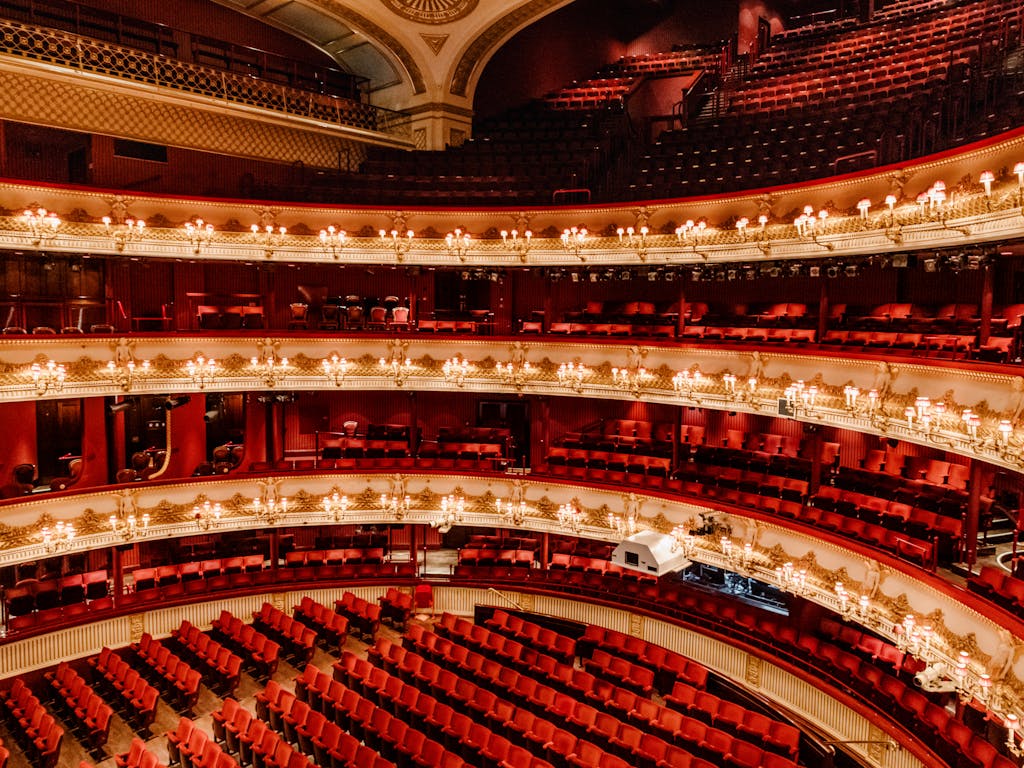
Main Stage
There is lift access and step-free routes to over 100 seats in the Stalls Circle, Balcony and Amphitheatre. There are 10 steps or fewer to some seats in the Stalls Circle, Balcony, Amphitheatre and the Donald Gordon Grand Tier. All seats in the Orchestra stalls are accessed by 9 steps or more.
We have an assistive listening system available to use. Surtitles, captions and translations in English are displayed on screens above the stage and around the auditorium.
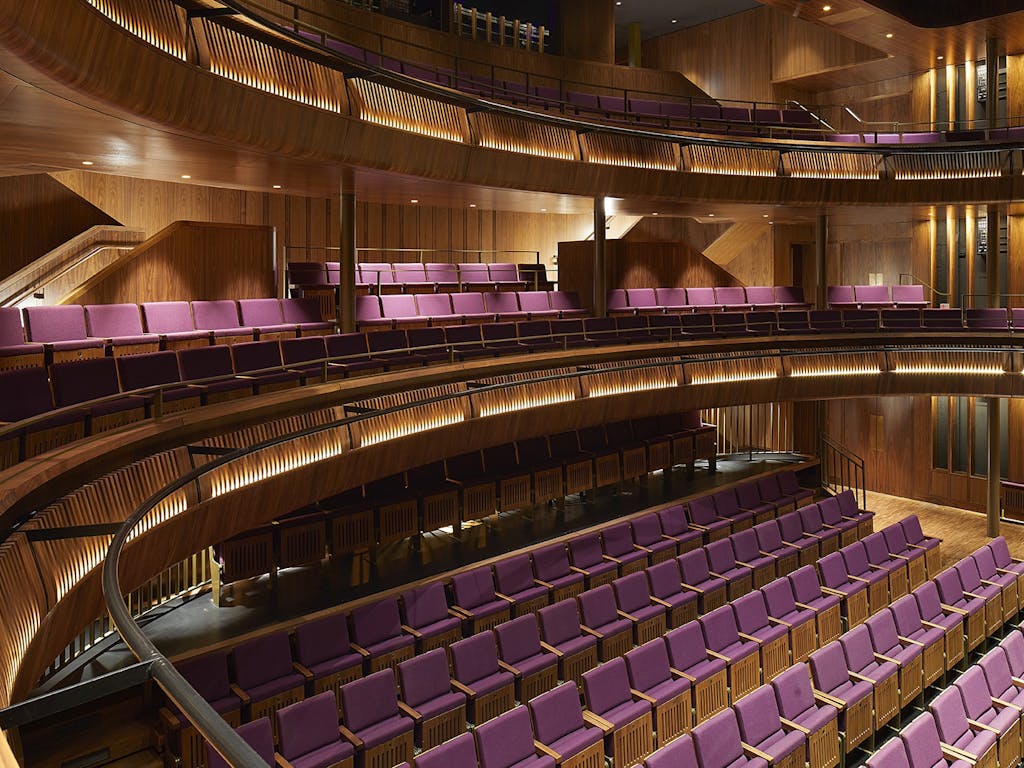
Linbury Theatre
For step free-access and wheelchair spaces in the Linbury Theatre, you will need to book seats on the right-hand side of the auditorium.
We have an assistive listening system available to use. Surtitles, captions and translations in English are displayed on screens above the stage and around the auditorium.

Clore Studio
Contact the Box Office to book step-free seating options or two wheelchair spaces available in Row A.
The Clore Studio is often used for Insights - events including open rehearsals, in conversations, pre-performance talks, beginners' guides, behind-the-scenes demonstrations and participatory workshops.
Covent Garden
Access in and around Covent Garden
Covent Garden is a busy area of central London that spans across several streets - it can be very noisy, bustling with people and brightly lit from shops, theatres and passing cars. The Piazza, where one of entrances to the Royal Opera House is located, has uneven cobbled pathways with several sloped pavements and while the area is pedestrianised, cyclists and vans do pass through. The route around the Royal Opera House, underneath the arcade, is smooth tiled flooring and covered overhead. The other entrance to the Royal Opera House is on Bow Street, paved alongside a road.
There are public toilets inside the Market Building in the Piazza and next to St Paul's church. Both toilets are not, however, step-free and do charge for use. The closest Changing Places toilet is in the National Portrait Gallery, which is around a ten-minute walk from the Royal Opera House. You are, of course, welcome to use the facilities within the Royal Opera House. We have accessible toilets located on the ground level, in the Linbury Foyer and on Level 5, but we do not currently have Changing Places facilities. Please ask a member of staff for directions.
Q-Park London, located at 34-35 Bedfordbury, is the nearest parking with accessible spaces. There is pay and display parking on Henrietta Street, Southampton Street and Tavistock Street, as well as an NCP car park on Drury Lane. There are a limited number of disabled access parking bays in Bow Street and Floral Street.
Covent Garden station is on the Piccadilly Line and is the nearest tube station to the Royal Opera House. It is a very busy station and there are steps around the station from the tube platform, with a further 139 steep stairs taking you up to street level, but there are lifts that you can take.
For more information on accessibility around Covent Garden, see AccessAble's guide.
Resources
We are working on improving the accessibility of these resources. At the moment, our seat maps and some of our PDF-formatted resources aren’t compatible with screen readers. Please contact the boxoffice@roh.org.uk for more information on seating if you are unable to use any of them.
Below you will find a variety of resources that can help with the enjoyment of performances you might wish to see which includes seat maps, visual stories, audio guides and introductions and British Sign Language interpreted information videos.
Seat Maps
Visual Stories
Audio Described guides
British Sign Language information videos
Subtitled information videos for your visit
Resources archive: 2024/25 Season
Our commitment to accessibility
We want everyone to have the best experience with the Royal Ballet and Opera - whether they are attending a performance or event, watching on Royal Ballet and Opera Stream or using our building. We have adapted many of our performances and events to provide more opportunities and a range of ways to enjoy ballet, opera and music.
If you have any questions about access, please email boxoffice@roh.org.uk or Phone – +44 (0)20 7304 4000
Royal Opera House Covent Garden Foundation, a charitable company limited by guarantee incorporated in England and Wales (Company number 480523) Charity Registered (Number 211775)


